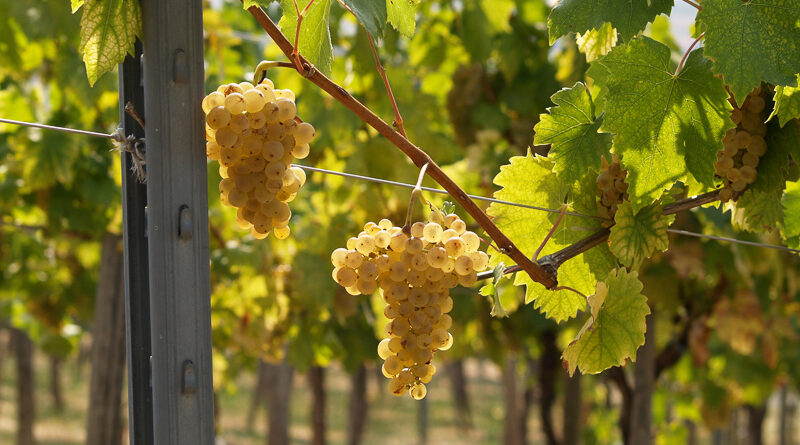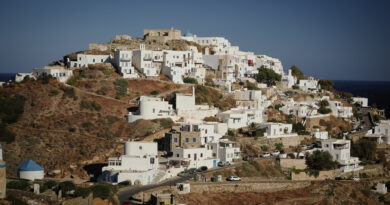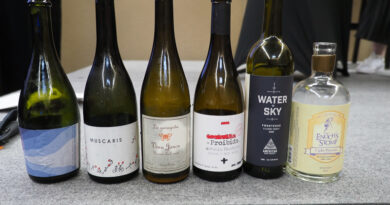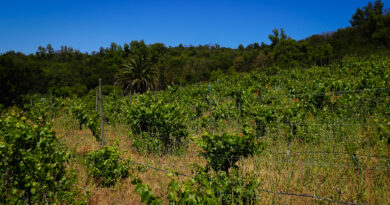Crushing on Croatia: the wines, regions and grape varieties
By Janet Dorozynski
Janet Dorozynski is a Canadian-based wine communicator whose day job involves helping Canadian wineries export their wines. She has the WSET diploma and also a PhD, and is panel chair at the National Wine Awards of Canada, and has been judging wine in Canada and internationally for 20 years. In this, her first article on wineanorak.com, she gives a lucid and in-depth introduction to Croatian wine.
Before lock down and travel restrictions became a wine writer’s reality, I was able to wander the wine regions of Croatia and taste loads of wonderful wines. It’s still a relatively unknown region that hasn’t been visited by many international wine journalists and was a voyage of discovery to be sure: with equal measure stepping back in time as well as a glimpse into the future of winemaking in this slice of south Eastern Europe.
There’s no denying that many parts of Croatia are just jaw dropping beautiful. A country of hundreds of islands and coastal inlet villages on the Eastern Adriatic, sweeping panoramic vistas of the Slavonian plains, verdant vineyards planted on the reddest soils along with hill top and historic walled cities (Game of Thrones anyone?) that rival the best in Europe. But beauty and tourism destination potential aside, ask your average wine consumer what she or he knows about Croatian wine and you’re likely get a lot of blank stares.
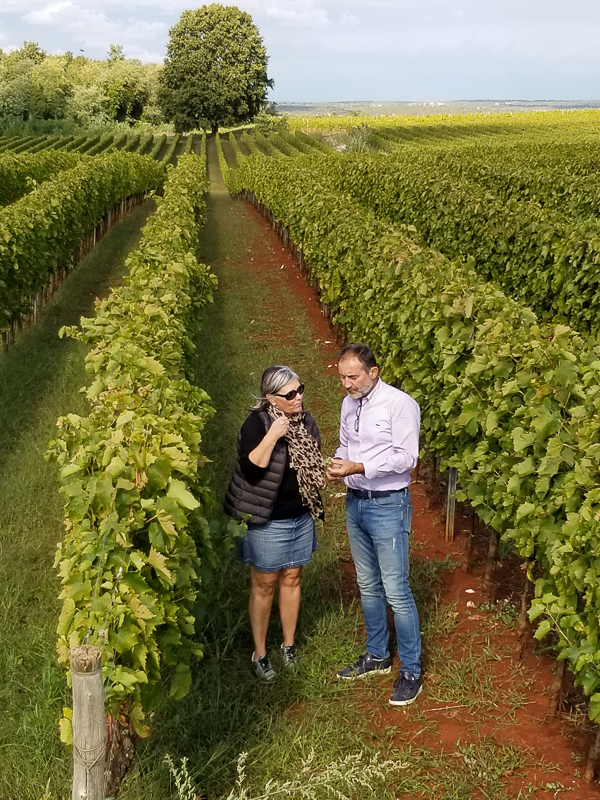
There is still limited global recognition of Croatian wines, hindered in part by disjointed international marketing efforts by a government-run promotional body, product availability outside the country and fragmented sources of information with no proper wine maps to speak of, all of which are needed to raise awareness and educate trade and consumers on the rather complex maze of appellations and indigenous varieties. The official Croatian wine website, Vina Croatia is skeletal at best (http://vinacroatia.hr/en/) and many wineries themselves don’t even have websites (or very poor ones) or any presence on social media! While there have been a few champion writers and ambitious importers and restauranteurs and sommeliers to date, overall knowledge and supply of Croatian wine remains low.
Despite low awareness, Croatia has been growing grapes and making wine for thousands of years and produces a range of white and red wines from indigenous and international grape varieties. Although the wine scene might not be as edgy as neighbouring Slovenia, and some regions and producers appear to be caught in a time warp, the best wines from Croatia stand with the finest from anywhere, with small and medium sized winery owners and winemakers showing a healthy dose of frontier spirit and experimentation. It’s a modern yet traditional industry, as well as country, and during my time there, I couldn’t help thinking of past visits to Turkey and Georgia – also countries with an abundance of indigenous grape varieties ripe and ready for a competitive global wine market always looking for the next big thing.
Going Back in Time
Viticulture and wine making in Croatia has been traced back to the 5th century BCE, where a coin with a grape cluster and amphora was discovered on the island of Vis in southern Dalmatia dating from this period. Other examples of archeological and written documentation also support the evidence of wine production from Istria to Dalmatia during this time with records from centuries later of the Illyrians, Thracians and Romans making wine in continental Croatia. There were disruptions to wine making during the Ottoman Empire in the 16th century, and in the late 19th century the country was ravaged by phylloxera like the rest of Europe. Sadly the pest took its toll on many of Croatia’s indigenous varieties, and in the continental region of Slavonia, was replaced largely by German and Austrian varieties brought in by the new rulers of the Hapsburg Empire. Interestingly, although Istria and Dalmatia were also hit by phylloxera, the large plantings of indigenous varieties, well suited to the climate and soil, fared better and continue to dominate production in these regions.
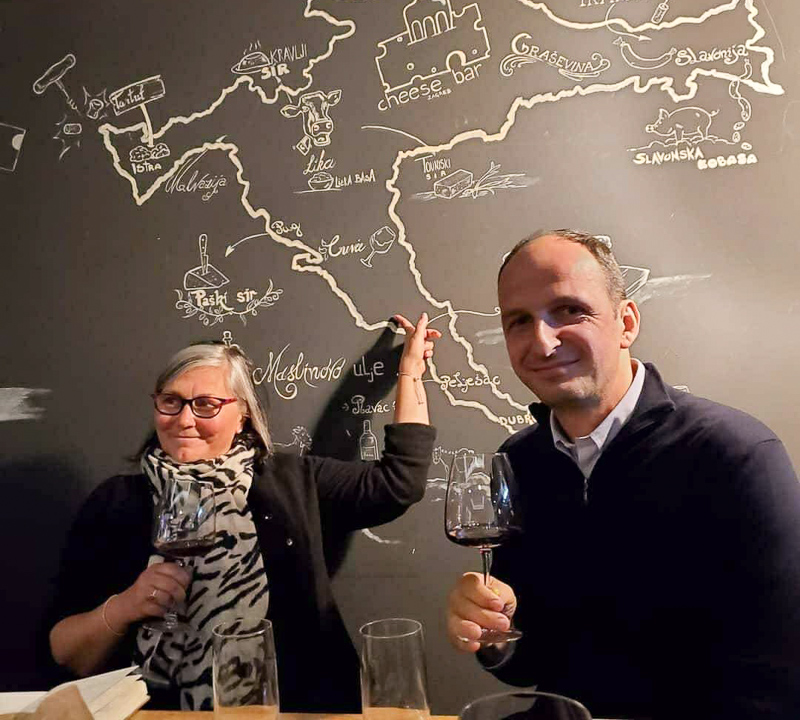
Yet it was the 20th century that has had the most profound impact on Croatian wines, with the last three decades shaping the modern industry. Saša Špiranec, Croatia’s most acclaimed wine writer and founder of the country’s biggest wine fair Vinart, explained over multiple pours at Zagreb’s cool kid wine bar Cheese, how the country has traditionally been a wine region, growing varieties similar to Slovenia, Austria and Hungary, as well as the multitude of indigenous varieties that survived phylloxera. Like many other regions, grapes were historically co-planted to combat disease and counter-balance the acidity, sugar and uneven ripening in the making of field blend wines.
Much of the 20th century wine industry in Croatia has been overshadowed by the rise and fall of communism which, similar to other Eastern European countries, led to the dominance of large cooperatives and state enterprises that churned out vast amounts of low quality wines. Špiranec explained how under communist rule, there were two distinct phases of the wine industry. The early years, between World War I and II and up to the 1960s, are characterized by the pursuit of high-yielding grape varieties and the move away from indigenous grape varieties, which were not as productive as some international varieties. It was during this time that we first saw early plantings of Rhône varieties in the hot and dry regions of southern Dalmatia.
The 1970s and onwards led to even more plantings of international varieties to satisfy the growing production and exports of bulk wine, mainly to Germany. During this period, Croatian wine exports were greater than they are today but could only be bulk, not bottled wine, pumped out by the large state enterprises. Under communism, it was forbidden for private citizens to own more than ten hectares of land which, which not only assured the dominance of large-scale state owned wine production but led to the proliferation of thousands of family grape growers and wineries that continues to this day.
The Modern Industry
As the 20th century was drawing to a close, the world witnessed years of bloody civil war in the region and the dicing up of the former Yugoslavia into the myriad separate countries that exist today. Croatia became an independent country in 1991 and with the return to a free market economy the wine industry grappled with its past that had been closed off to outside winemakers, innovation and technology and which had little need or motivation to make quality wines.
The early days of the free market economy to now can be described as being a mix of tradition and the “way how things have always been done”, counter-balanced with some healthy experimentation and a dose of international consultants thrown in for good measure. A significant factor in Croatia’s increased wine quality and success of the industry can be attributed to the country joining the European Union in 2013. Being part of the EU has not only opened up export markets and information and technology transfers within Europe, but allowed wineries to access the generous pot of EU wine industry funds that has led to modernized and increased plantings and replanting, new equipment purchases and the expansion of production facilities. Everywhere I went there seemed to be an EU grant sign indicating the injection of funds into the Croatian wine industry.
Croatia’s vineyard area is still small by world standards and hovers at roughly 20 000 hectares. Many of the 1600 or so producers are small to medium sized family run operations that make wine for themselves with almost half of Croatia’s vineyards not even registered for business and trade but for personal consumption. The wine that is produced commercially mainly goes to supply the country’s thirsty tourism industry and the millions of not always discerning holiday seekers that flock to Croatia each year (over 20 million in 2019 according to the Croatian Tourist Board). Overall production in 2019 was just over 70 million litres with Croatia importing five times as much wine as it exports. The small amount that is exported goes to the surrounding markets of Serbia, Bosnia Hercegovina and Montenegro along with lesser amounts making its way to Germany, Austria, the UK, the USA and Canada.
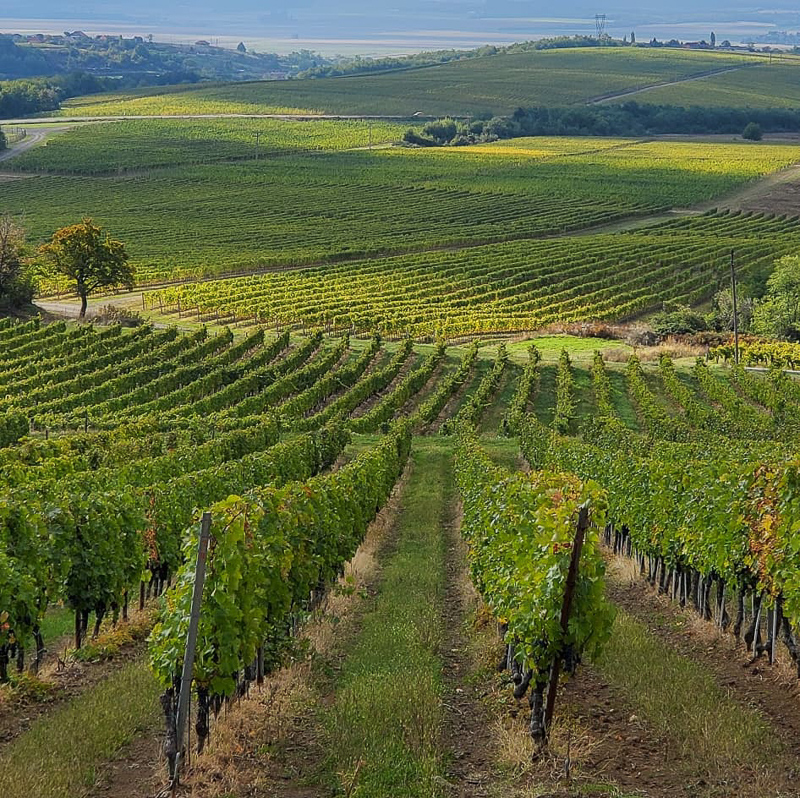
The Lay of the Land
Croatia has four main wine growing regions which can be characterized as either continental or coastal. Slavonia and the Croatian Danube comprise 31% of hectares under vine, the Croatian Uplands 22% with Istria and Dalmatia combined accounting for 47% of vineyard plantings.
The country’s four wine regions are divided into sixteen sub-regions or Protected Designation of Origin (PDO) and 66 appellations. With the exception of Dingač for Plavac Mali, the first specific appellation established for this red wine in Southern Dalmatia in 1961, it is rare to see a sub-region or appellation named on a Croatian wine label even though over 75 % of Croatian wines are from PDOs. I guess this is not surprising since the modern Croatian industry is still relatively young with most of the wines never leaving the country. When they do, the PDOs which delineate proximity to the sea or hinterland (or geopolitical areas within regions) likely appear as a jumble of consonants and squiggly accents to non-native speakers, making varietal labelling both more common and approachable.
Continental Croatia
Slavonia and the Croatian Uplands are the lesser known of Croatia’s wine regions though produce a significant amount of the country’s wine. Both are inland with a continental climate, with the Croatian Uplands being the coolest and wettest growing area in Croatia.
Croatian Uplands
The hilly areas surrounding the capital Zagreb constitutes the Croatian Uplands. This is classic cool climate wine territory where white varieties dominate with Muscat, Pinot Blanc, Pinot Gris and Chardonnay being popular varieties. Furmint, known as Pušipel or Moslavac in Croatia is also grown to make dry wines, with its susceptibility to botrytis cinera providing an added dimension to this distinctive white variety. The winery Cmrečnjak is making some interesting dry whites from both Pušipel and Sauvignon Blanc.
You can likewise find the native variety Škrlet in the Croatian Uplands, which has a similar peppery flavour profile to Grüner Veltliner and makes fresh and fruity wines best consumed young. Similarly, there is a smattering of Pinot Noir and Purtugizec plantings (aka Blauer Porturgieser) grown for reds. The region’s cooler climate is also well suited to sparkling wine production with good examples of traditional method sparkling, some with 10 years aging on lees, with small producer Tomac leading the charge.
Slavonia
Slavonia encompasses the sprawling plane stretching east from Zagreb to where the Danube forms the border with neighbouring Serbia. The fields and gently rolling hills of Slavonia are home to vineyards and wheat fields as well as forests of the prized slow growing Slavonian oak used to make wine barrels. This is a quintessential continental climate region with warm sunny summers and moderately cold winters. It is also home to Croatia’s most planted white variety Graševina which thrives in the Kutjevo appellation in the heart of Slavonia, in a valley surrounded by a low lying mountain range. Frankovka (aka Blaufränkisch) is a significant red variety in Slavonia used in the production of interesting still and sparkling wines. Traminac (aka Gewurztraminer) is also grown in the Ilok appellation in the eastern most part of the region near the Danube, which is the warmest area of Slavonia.
Coastal Croatia
Coastal Croatia consists of Istria and Kvarner (though the region is more commonly referred to only as Istria), the large northwestern peninsula jutting into the Adriatic, as well as Dalmatia, Croatia’s best known and southernmost wine region. Coastal Croatia enjoys mild Mediterranean temperatures with a large number of sunny days throughout the growing season. Summers are hot and dry, with mild winters and abundant precipitation. While both Istria and Dalmatia have a Mediterranean climate, Istria is where the cold from the Alps to north meet the warmth of the Adriatic, making it cooler that hotter and drier Dalmatia. Istria and Dalmatia are both particularly inviting as wine and tourism regions with scores of picturesque coastal and hill top towns and villages sprinkled amidst steep and sloping vineyards.
Dalmatia
Dalmatia spans the coastal and inland area from Zadar south to Dubrovnik. The region is a labyrinth of rocky karst outcrops, reefs and hundreds of islands that are home to more indigenous grape varieties and old vines than any other region in Croatia. Vines in Dalmatia intrepidly grow on steep inland slopes and on the island-like Pelješac Peninsula. There are also a number of vineyards and wineries on the islands of Brač, Vis, Korčula and on Hvar, which boasts the world’s oldest continuously cultivated vineyard at the UNESCO World Heritage Site of Stari Grad Plain.
The wines from Dalmatia echo the hot, dry growing conditions on well-drained sun-drenched limestone soils. The region is home to native varieties like Pošip and Vuguva for whites with a number of reds such as Crljenak which mysteriously made its way to California where it is known Zinfandel, along with Babić, Tribidrag (similar to Primitivo) and of course Plavac Mali, which makes powerful, full-bodied reds with often equally high octane alcohol.
Istria
To the north of Dalmatia, the rocky craggy white soil landscapes give way to the gently rolling hills and iron oxide rich red soils in Istria. This region produces some of Croatia’s most exciting and audacious wines, experimenting with skin maceration/contact, orange wines and single block wines. This northwestern corner of Croatia has been part of Austria, Italy and Yugoslavia over the last century and the influence is apparent in the cuisine and wines of region. Istria shares similar Mediterranean climatic characteristics with Dalmatia, though is slightly cooler like neighboring Slovenia and Friuli in Italy to the north.
Istria is a large peninsula with an extensive coastline dotted with numerous hilltop peaks along with flatter areas that are responsible for numerous microclimates and growing conditions throughout the 4000 hectares of vines, which prior to phylloxera numbered over 54 000 hectares. The region is best known for the indigenous white grape Malvazija Istarska (known as Malvasia Istriana in Italy) which accounts for over two-thirds of Istria’s production. It is increasingly known for the native red variety Teran that produces uniquely fresh and aromatic medium to full bodied reds which excel when planted on the predominantly clay-based terra rossa soils that are widespread in the region. International varieties like Merlot, Cabernet Sauvignon and Chardonnay have also joined indigenous grape plantings over the past few decades.
From what I saw and tasted, Istria is leading the way in terms of Croatia’s quality revolution for both wine and its well-developed wine (and olive oil) tourism route infrastructure, with restaurants, hotels and white truffles, that give those from Alba in Piedmont a run for their money.
Grapes to Try
Hundreds of varieties are planted throughout Croatia and the country is home to over 120 indigenous grapes that survived phylloxera. However, only forty of these are made into wine of any significant quantity which can be found as single varietal wines or blended with the usual international suspects like Chardonnay, Riesling, Sauvignon Blanc, Merlot, Cabernet Sauvignon, Syrah and Pinot Noir.
The three most planted native grape varieties are Graševina and Malvazija Istarska for white grapes and the red Plavac Mali; together they account for more than one third of the country’s total production. They, along with a handful of other distinctive indigenous varieties, are made into many of the country’s most impressive wines and worth seeking out.
Babić
The red variety Babić is not as well known as Plavac Mali but what it lacks in recognition it makes up for in elegance and finesse. Babić is grown in small amounts (less than 500 hectares) in Northern Dalmatia around the towns of Šibenik and Primošten, north east of Split, with a smattering of plantings on the island of Korčula. It is a deep blue-skinned variety with recent DNA profiling identifying it related to Dobričić (either the grandparent or half-sibling), which is also a relative of Plavac Mali.
Wines made from Babić are dense and full bodied with a red berry, herbal spice lift and freshness similar to some Italian varieties like Sangiovese or Aglianico as Babić preserves acidity better than Plavac Mali and other native Dalmatian red varieties, resulting in more harmonious and balanced wines. And unlike Plavac Mali, the generous tannins are supple and rounded and despite the hot growing conditions have alcohol levels 14% or less.
The best examples of Babić come from less-fertile karst limestone soil vineyards, which help to curb its natural vigour and concentrate flavors and complexity. Interesting examples include the Testament by Jadrtovac, which grows their Babić (and other grape varieties) organically, as well as the organically farmed Babić from Zlatan Otok, who sources mainland grapes for their Hvar-based winery. I was also fortunate to taste the layered and compelling, not to mention rare and expensive, 2015 Markus Franz Ferdinand Babić by Šimunović i Szabo winery, whose vineyards were planted in 1914, the same year that Franz Ferdinand was assassinated.
Graševina
Graševina (aka Welschriesling, Laški Rizling, Riesling Italico, Olasz Riesling) is Croatia’s most planted white and grape variety overall. While its origins have been disputed, according to Robinson et al in Wine Grapes, Croatia or the Danube basin appear to be the most likely place of origin of this variety. Graševina is extensively grown as a work horse grape in many parts of Central and Eastern Europe, but looks to have come into its own in the continental climate on the plains of Slavonia, with best examples made in the Kutjevo Slavonski Brod and Djakovo sub-regions from wineries Kutjevo, Krauthaker and Enjingi, the first producer allow to produce wine privately after the fall of communism.
Graševina, which translates into “green peas” in Croatian, is a prolific late ripening grape that retains good acidity if yields are controlled. It is also relatively cold-hardy and enable to withstand Slavonia’s colder winter temperatures. Light bodied and Riesling-esque, though less aromatic than Riesling, the variety produces a range of wine styles in Croatia, from young, fresh and easy drinking to oaked with richer floral and stone fruit complexity.
Most Graševina is aged in stainless steel or large neutral wooden barrels. Due to fairly high acidity, it can age well though the majority of dry and semi-dry styles are meant to be drunk within a year or two of bottling. The variety is literally used to make to everything in Croatia, from sparkling (traditional method and charmat) to dry and off-dry to sweet wines (botrytized and even ice wine). It also finds its way into Gemišt, a mix of Graševina with sparkling water historically drunk by Slavonian villagers after a hard day’s work in the summer sun.
Malvazija Istarska
The Malvasia grown in Croatia is known as Malvazija Istarska. It is ampelographically distinct and has no relation to the Malvasia from Greece or Italy. Although there are some plantings of Malvazija Istarska in both Friuli and neighbouring Slovenia, in Croatia the variety is predominantly grown in Istria and made into varietal wines, usually fermented and aged in stainless steel. The variety is believed to have been cloned from another Malvasia brought to Istrian Peninsula during the Venetian rule. First written accounts of Malvazija Istarska date back to 1891 from a wine description for a wine expo catalogue in Zagreb.
Malvazija Istarska is the most widely planted white variety in Istria, accounting for over 50% of all white grapes. It is grown on a variety of soils and as it can be quite vigorous, cropping and yields need to be kept in check. Fresh and fruity (stone and citrus fruit) with a honeyed floral character and lowish acidity, this green hued wine often has a slight saline note and attractive bitterness on the finish.
Pretty much every winery in Istria makes at least one Malvazija and there is lots of experimentation with the variety. A number of wine makers age their Malvazija Istarska in new and neutral oak (French or acacia) for varying periods of time, and the adventurous in amphorae and concrete as well. Several like Clai Winery (Giorgio Clai is often referred to as the ‘Godfather of Istria’ and the ‘Godfather of Organic Winemaking) or Roxanich make orange or amber wines with long skin maceration that are well suited to the variety, adding seriousness and complexity without any bitterness or excess tannin.
Others like Cattunar Winery in Brtonigla make single block Malvazija from the same clone (Clone 420) planted in close proximity on the different white, grey frey, black and terra rossa soils found throughout the region. They are vinified identically and bottled separately under their enlightening 4 Terre Malvazija Istarska series which displays the very different expressions of Malvazija grown on different soil types.
I found Malvazija Istarska to be the most exciting white variety I tasted in Croatia. Other noteworthy producers include Matošević, Kozlović, Meneghetti, Benvenuti and Damjanić along with Coronica, for Moreno Coronica’s ongoing experimentation and iterations of Malvazija made with little to no oak (as of 2017). The variety is both unique and a perfect match for Istria’s bounty of outstanding seafood and fish.
Plavac Mali
Plavac Mali is Croatia’s best known red grape and the county’s third most planted variety. Its name in Latin means small blue, an accurate description of the small dark blue berries that grow in tight clusters. Though previously mistaken to be Zinfandel, the variety is actually cross between Crlenjak Kaštelanski (ancestral Zinfandel) and Dobričić (an ancient red wine grape variety from the Dalmatian coast).
The grape is largely planted in southern Dalmatia where it is often grown as bush vines in rocky soils on steep south-facing slopes, like some of those in the well-regarded Dingač appellation overlooking the sea at an incline of almost 50°. Yields are quite low, but sugar content is high with 13 to 15% alcohol usual in finished wines, with some producers having reached 17% alcohol! The vine is prone to uneven ripening and benefits from lots of needs lots of sunlight, with slope, aspect and the reflection of sun from Dalmatia’s white soils and the Adriatic Sea come in handy.
Plavac Mali makes full-bodied and robust wines, with black cherry, peppery spice and smoky notes that are in high alcohol with substantial (sometimes too much so!) tannins and low acid. Most are aged in oak as a varietal wine with long term aging potential. Depending on where it is grown and winemaker influence, Croatian Plavac Mali runs the gambit from being very good to less so, with examples ranging from course and rustic, to well-balanced traditional examples to slick modern examples with a fresher fruit and acid profile.
Well known appellations for Plavac Mali include Dingač and Postup on the Pelješac peninsula with good wines coming from Vinarija Dingač, Bura-Mokalo, Miloš, Kiridžija, Bartulović and Grgich (of Napa Valley Grgich Hills fame). Other well-crafted examples come from Jo Ahearne on the island of Hvar and Senjkovic on the island of Brač.
Pošip
Pošip is an indigenous white grape variety that is grown in Dalmatia. It is originally from the island of Korčula (which is also the home of intriguing indigenous white variety Grk) where it has long grown sheltered from phylloxera. It still grows on its own rootstocks in sandy soils mostly around the villages of Smokvica and Čara. Pošip is also now grown on the Pelješac Peninsula and on Brač and Hvar, as well as other small islands.
Pošip is a highly aromatic variety with a tendency to produce high sugars and alcohol. It is a good yielder and early ripener and is qualitatively one of Dalmatia’s most important white varieties whose quality was recognized through the creation of the first white wine appellation of Korčula in 1967.
The stone fruit aromas are reminiscent of viognier and the variety is largely made in two styles; as a dry fresh, herbal influenced wine meant for early drinking, or when oaked and aged on its lees, as a richer, more opulent style that can age. The grapes can also be dried in the passito method and made into the region’s traditional sweet wine Prošek.
The dry and aromatic Korta Katarina Pošip and the Saints Hills Posh are fresh and zingy with good complexity. Winemaker Jo Ahearne, a transplant from the UK has an interesting take on the variety; she believes that hyper-oxidizing the juice removes bitterness while the addition of a 4% portion of skin contact Pošip to the final blend adds texture, florality and spiciness. Unfortunately Ahearne’s 2018 Pošip that I tasted was not allowed to be commercially released by the Croatian Wine authority tasting panel as they deemed the wine oxidized.
Teran
The red variety Teran (aka Cagnina, Refosco del Carso, Refosco d’Istria which is Refošk in Slovenia, Terrano del Carso) has been grown in Istria for centuries and in the 19th was planted in approximately 90% of all vineyards. Over the past two decades, it was under threat of being overtaken by plantings of red Bordeaux varieties but luckily has made a comeback and remains the most common red grape today. It is mostly grown inland in the western part of the Istrian Peninsula.
Teran is a late ripening variety with large clusters of densely packed berries. It is resistant to late frosts and fungal diseases, which make it is well suited to the region. It is however thin-skinned which makes it sensitive to strong sunlight and excessive humidity (grey rot) so site selection and leaf removal are important.
The variety produces wines with naturally high levels of acidity and marked tannins that make it ideal for barrel aging and long term aging in bottle. It is deceptively dark in colour for such a lively and aromatic variety with bright red fruit and herbal peppery notes. Medium full-bodied, it is slightly Italianesque and often mistaken for refosco.
Teran, while still relatively unknown, is a hidden gem among Istrian and Croatian wines for both its lighter drinkable style (in comparison to heavy weight Plavac Mali for instance) that can be enjoyed with or without food. The Gran Teran from Moreno Coronica is a standout along with other notable examples from Marijan Arman, Benvenuti, Dobravac, Fakin, and Kozlović.
Vugava
Vugava (also known as Bugava) is a high quality, aromatic white variety found mostly on the island of Vis in central Dalmatia. It is rumoured to have been introduced and cultivated by the Greeks who colonized the island thousands of years ago. It is usually grown on either stony or sandy soils on Vis with the best wines coming from hill vineyards and harvested by hand during a very narrow picking window to preserve acidity.
Vugava is often compared to Viognier due to its intense, at times overripe, aromatics of apricots and honey, fairly high alcohol and lowish acidity. Although it produces high quality grapes with decent yields, the grapes thin skins make it prone to diseases, sun burn and wasp damage.
Vugava has traditionally been used in the sweet wine Prošek or blended with varieties with lower sugars and higher acids but as of late is made into dry and fresh varietal wines that clock in at under 14% alcohol that are meant to be drunk young. Noteworthy examples come from Lipanović on the island of Vis, as well as from Stina, who is making a lovely textured Vugava grown on the island of Brač.
After tasting a wide selection of Croatian wines, both in situ and as a panel member at the Decanter World Wine Awards last year, what struck me is that while Croatian wines made from or blended with international varieties are well-made quality wines, they could come from almost anywhere in the world. Rather it is the wines from indigenous or native varieties that are distinctive and unique and are and should be Croatia’s unique selling proposition.
Andrew Jefford, who also visited Croatia last year, told me that he considers the focus on international varieties to be “a bit of a trap”. He believes that “once you start producing international varieties you will be condemned to selling on price. A much better idea is to try to create an international reputation with indigenous varieties and Croatian uniqueness because no one else can compete away that advantage. This is especially true since Croatia has no particular need to export and is a net importer of wine”. Jefford, as I, was impressed with the wines he tasted from indigenous varieties and describes Croatia in a way that only he could: “as a kind of mini-Italy, a reflection of Central Italy in the mirror of the Adriatic, with Mitteleuropa complexity and a hint of Balkan exoticism, too”.
I’ll have a bottle of what he’s having……
A Mixed Case of Croatian Wineries
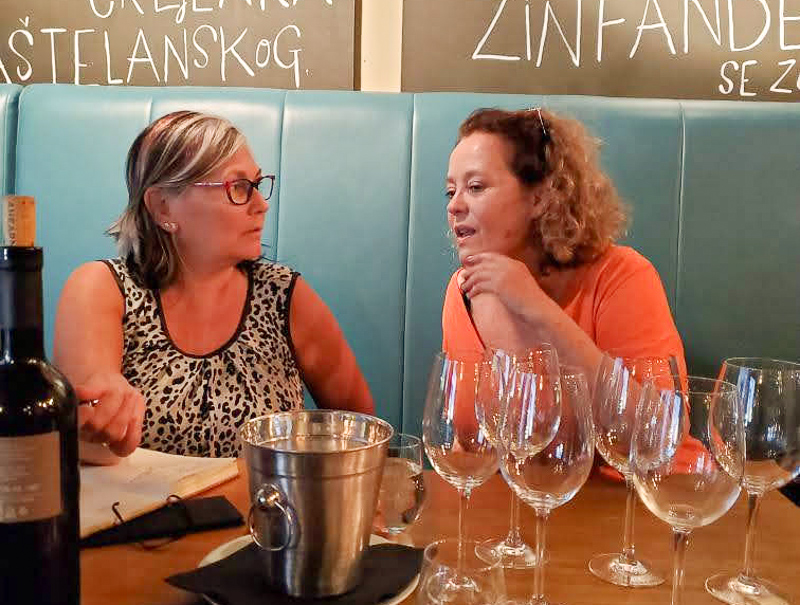
Ahearne Wines
UK born Jo Ahearne has put down roots at her eponymous winery in Dalmatia after obtaining an MW and studying winemaking and making wine in Australia (and elsewhere). She lives and bombs around the island of Hvar in her Lada named Lucy and had just completed her sixth vintage when I sat down to taste wines with her at the wine bar Zinfandel in Split. Ahearne described how when she first came to Croatia on holiday in 2003, many of the wines she tasted were oxidized, mousy or with unforgiving amounts of volatile acidity, or all three at once, and how she had to switch to drinking beer. Although the situation has thankfully since changed, Ahearne says that old habits persist, especially in the case of grape growers. She said it has been easy to convince some growers to change how they grow grapes, in particular since they are still paid on the basis of sugar content which can lead to over-ripeness and raisined grapes, especially in varieties like Plavac Mali.
Ahearne does not own any vineyards and makes wine from indigenous varieties she sources from growers, mostly Pošip and Plavac Mali. She also makes wines from a few lesser known varieties like Kuc (Trbljan), Dobričić and Darnekuša, which has only one hectare remaining on the island of Hvar that she uses to makes the tangy, delicious, dry rosé Rosina named after her mother. Her single varietal wines and blends are made with a welcomed outsider perspective (natural wines, skin contact whites, reds with juicy acidity and less tannin, extraction and oak) which Ahearne admits are always understood, particularly in the domestic market which still has a lot of “label drinkers” as well as consumers and tourists accustomed to traditional and bulkier Croatian wines.
Her wines are different from many of the other Croatian wines I’ve tasted in particular the Plavac Mali. While showing a similar intense dark cherry, plummy, floral character, Ahearne’s 2014 South Side Plavic Mali was medium bodied and juicier, with refined tannins, than many others made from this variety. Although she only produces 7000 bottles a year for all her wines, hoping to increase to 10 000, one quarter of Ahearne’s production is exported to the UK, US, Japan, Singapore and Australia so be sure to keep an eye out for them in top restaurants and at merchants in these markets.
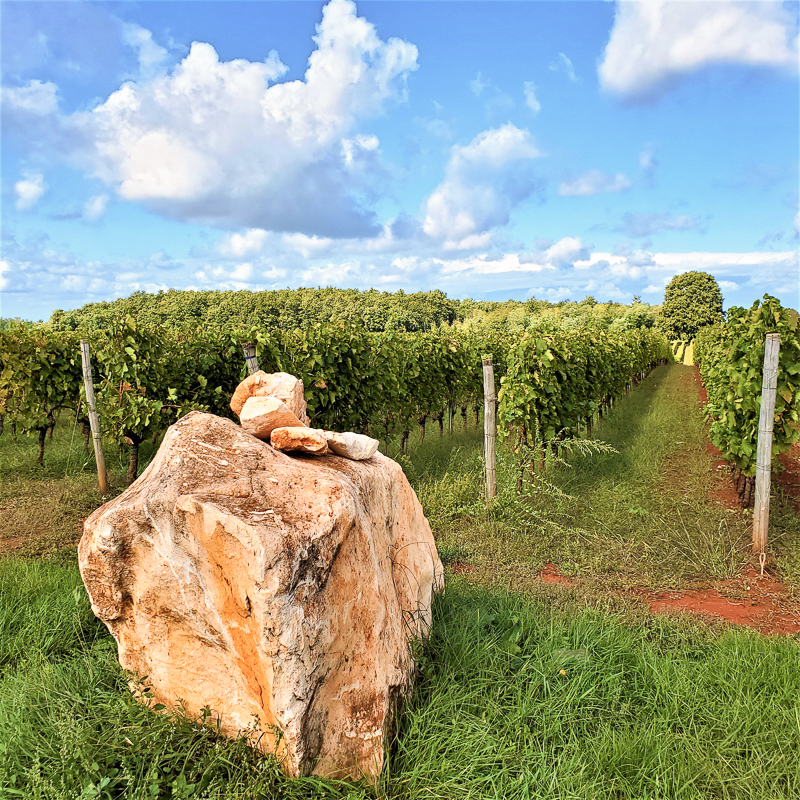
Coronica
Coronica is the namesake winery of Moreno Coronica, a former mechanic, fisherman and self-proclaimed sea urchin smuggler. A character if there ever was his commitment to Malvazija Istarska and Teran is unwavering. Coronica is a third generation winemaker who farms the land owned by his grandfather when Istria was part of Italy, which was also farmed by his father when it was part of Yugoslavia. Vineyard plantings have increased from 2.5 to the current twenty hectares since 2005, with 75% planted to Malvazija and the remaining 25% to Teran with a smidgeon of Merlot and Cabernet Sauvignon.
All of Coronica’s vines are grown on the red terra rossa soils of Istria that are rich in iron oxide, bauxite and other minerals. The vineyards are situated 2.5 kilometres from the sea, with the winds from the Adriatic keeping botrytis in check while diurnal temperature variation leads to intense aromatics in the grapes. In addition to growing grapes, Coronica also produces his own olive oil, which was fascinating to see pressed and taste fresh.
Coronica is passionate when he speaks about the potential of Malvazija in Istria and becomes very animated about the use of oak. He strongly believes that oak aging is not necessary for his whites and that his Malvazija with oak did not age as well as his unoaked versions. Over the years he went from using new to second and third fill oak, from 2 to 1 years and from 6 to 3 months in barrel until he stopped using oak altogether as of 2017. He believes the variety is better without oak but that lees contact and aging are key, as it adds texture and complexity and preserves the authenticity of the variety. The 2017 Gran Malvazija comes from 70+ year old vines and was on its lees for 16 months with weekly battonage. It’s an extraordinary intensely floral and perfumed wine with a lingering textured finish and attractive end note bitterness.
Coronica’s whites rarely undergo malolactic fermentation but will do so when acids are particularly high. He also feels strongly about proper glassware for Malvazija and was part of a group who worked with Georg Riedel to develop the Malvazija Istarska glass.
Coronica is equally enthusiastic about Teran though says it is terrible to grow. Thin skinned and site specific, he has pulled out three hectares of the grape over the past several decades. Notwithstanding, Coronica’s Terans are very attractive. The 2016 Teran displays pure and layered red berry fruit with lively acidity and soft tannins; medium bodied and very dolcetto like. The 2016 Gran Teran, which is his higher tier and made only in exceptional vintages, sees four to 5 months maceration in stainless steel and is complex but juicy and balanced. The older vintages I tasted also aged very well with still present tannins and lively acidity years later.
Feravino
Located in an area of Slavonia historically known for fortified wines, Feravino is a former grape grower and juice producer dating back to 1804 that started making and marketing their own wines in 1997. They own vineyards as well as purchase grapes to produce around one million litres of wine each year, of which 25% is exported to 20 countries around the world with their most successful markets being Belgium, Switzerland and Finland.
Frankovka (aka Blaufränkisch) makes up 40% of their production along with a mix of indigenous and international varieties for the remainder. They produce still and sparkling wines with the charmat method sparklers from Graševina (Grasseco Extra Brut) and Frankovka (Francesca Brut) being well made and priced and cleverly packaged.
Feravino also make several tiers of still Graševina, a charming dry and fresh rosé from Frankovka and several tiers of red Frankovka ranging from the bright and approachable Classique made in stainless steel to the modern styled Frankovka blend (50% Frankovka with lesser parts merlot, cabernet sauvignon and franc) aged in new and older French, Italian or Slavonian oak.
Winemaking is overseen by a young husband and wife team who have their Masters in Oenology from the University of Zagreb and spent time on a scholarship making wine in the Napa Valley.
Korta Katarina
Korta Katarina is the consummate lifestyle winery in the bucolic hillside resort town Orebić on the Pelješac Peninsula. Owned by American businessman and philanthropist Lee R Anderson Sr. and his wife Penny, there is a delicious restaurant serving classic Croatian dishes with a modern twist, along with Relais & Châteaux accommodations in what was originally a hotel turned resort for the State bank during the communist period. The luxury eight suite rococo villa will run you a cool US$15,000 for the week but you’ll have your own private chef and for those requiring mooring, a private dock as well. If you don’t have your own yacht, you can also rent and charter Motor Yacht (M/Y) Katherine, the property’s super luxurious 61 metre yacht that sleeps up to 12 guests in 6 state rooms.
Alongside food and lodging, Korta Katarina makes wine with the first vintage dating back to 2006. It is mostly red and rose from Plavac Mali along with Pošip that they source from the island of Korčula. Their Plavac Pali, with a bit of Tribidrag (Zinfandel), is planted on their grey limestone terraced vineyards in the Postup and Dingač appellations. The dry and hot climate, with winds from the Adriatic means that disease pressure is low. However, farming here is not for the faint of heart and until the 1970s and 80s, donkeys were used to transport the harvest from the steep vineyards to area wineries.
The 2018 Pošip is fresh, fruity and Sauvignon Blanc like, while the 2017 showed complexity and concentration from that additional time in the bottle. I also tried three Plavac Mali, the 2012 Estate and the 2011 Winemaker’s Selection and Reuben’s Private Reserve. All were fuller-bodied and showing a sweet savoury character with tannins and alcohol mostly in check. Ivo Cibilić, general manager of Korta Katarina winery echoed what several others said about how Plavac Mali requires careful tannin management, during fermentation and barrel aging, as well as sufficient time in bottle before release to tame its boldness.
Kutejvo
By far the largest producer in Slavonia and Croatia as a whole, Kutejvo, dates back to 1232 when it was founded by Cistercian monks. The winery has changed hands many times since from ownership by the church to feudal lords to being a state owned cooperative under communism which was eventually privatized in 2003. It is the oldest winery in Croatia and eastern Europe and makes wine from 700 hectares of vineyards, over half of which it owns, located in the fertile volcanic soils of the Golden Valley of Požega which are 40 to 60 million years old.
Located at 45° north, the valley floor is fertile agricultural land, with vineyards mostly planted on the slopes and near hill tops, where it is windier and the risk of disease pressure is lower. Yields are kept lower than the national standard and even in this cool climate region, Kutjevo chief oenologist Ivan Marinclin remarked on how harvest is now taking place one month earlier (early August) than in the past.
Most of the vines are 30 to 40 years old with 90% of Kutjevo’s production for white wines, with 80% of dedicated to Graševina. They make everything from the grape, from traditional method sparkling wine, to several tiers of still whites, to late harvest and even ice wine, which is made according to the German/Austrian standard and harvested frozen on the vine at -7 Celsius. Graševina tends to excel in this part of Croatia and the Premium Kutjevo Graševina from 2016, 2017 and 2018 all showed well with apple and stone fruit aromas and flavours with a slight and pleasing bitterness and salinity on the palate. The wine is both good value and a perfectly balanced example of ripeness and acidity.
Export director Damir Vondraček described how 40% of Kutjevo’s wines are dedicated to export, making it the country’s largest wine exporter which also account for 60% of all Croatian exports. So chances are if you see a Croatian wine internationally, it will be from Kutjevo. The winery, like many others, has taken advantage of EU grants for the wine industry to ramp up for export and the domestic market, with 25% of their funds used to purchase new equipment, 50% for vineyard upgrades and expansion and 30% for international market development.
Saints Hills
Saints Hills is a modern winery owned by Ivana and Ernest Tolj located in the Pelješac Peninsula in southern Dalmatia. Day to day winemaking is overseen by owner Ernest along with the young and energetic cellar master Antonija Car who holds a degree in oenology from Zagreb University. Michael Rolland is also a consultant and agreed to sign on as he was excited by the potential of Plavac Mali from Dingač.
The winery sources and makes wine from its three main vineyards in different regions of Croatia: Malvazija Istarksa from St. Ante in Istria along with Plavac Mali from St. Roko in Komarna and the steep mountain side vineyards at St. Lucia in Dingač located nearest to the winery. They also make Posh, a Pošip from grapes grown on the island of Korčula and blend a few international varieties in some of their wines. Both grape growing and winemaking follow sustainable practices though the Croatian wine industry has no official certification.
Reds are made at the state of the art facility housed in a stone country farm house style building amidst the inland hills of the Pelješac Peninsula (whites and rosés are made in another facility near Split) complete with concrete eggs and vats and 900 litre oak fermenters. As one might expect, the wines are stylistically quite modern and polished, with fresh, aromatic and flavourful whites, with the concrete fermented 2016 Nevina (meaning innocent or virgin) from 70% Malvazija Istarksa and 30% Chardonnay having generous texture and length.
The reds I tried were mostly single varietal Plavac Mali, with 2016 St. Roko and 2015 St. Lucia Dingač partially fermented in concrete. The brightness and fresh acidity of the Dingač tempered the noticeable tannins and made for an attractive balanced wine, while the expressive dark fruit flavours of the St. Roko had more noticeable grippy tannins that will benefit from a few years in bottle.
Stina
The Dalmatian coast and Croatian islands capture their fair share of wine tourists and wineries like Stina couldn’t be located any closer to the sea. The winery is situated directly on the waterfront in the port of Bol, a small town on the island of Brač. It is housed in the historic Austro-Hungarian style cellar of Dalmatia’s first wine cooperative which came into being in 1903 and was taken over by the parent company of Stina in 2009.
Stina means stone in the local Dalmatian dialect and to illustrate firsthand the stony growing conditions, Stina’s export director Emil Mehdin ferried us to the top of their white Brač stone (limestone) vineyards in a rickety golf cart. A series of switch backs on a steep rocky road made the journey hair-raising to say the least but the dramatic vista from the top was worth it: sweeping south facing views of the Adriatic and island of Hvar in the distance with an amphitheatre of sloping and terraced vineyards beneath divided by rock walls into separate parcels. Given the rocky soils and sheer elevation, that can reach 500 metres above sea level, everything here is farmed and harvested by hand with yields naturally low and no need for green harvest.
Stina farms 75 hectares of vineyards to make single varietal wines from four indigenous varieties: Pošip, Vugava, Tribidrag and Plavic Mali, along with a few blends that include a splash of international varieties. The look and feel of both the wines and packaging is modern, though the tone on tone labels in white or black, while aesthetically pleasing, are not always easy to read.
The 2018 Pošip is light bodied with citrus and grassy overtones and refreshing acidity while the 2018 Maestro Pošip is weightier with exotic perfume and floral notes which can also be attributed to time spent in new 225 litre French oak. I however found the Vugava to be the most interesting and unique, with an appealing tropical saline character, zingy acidity and a lovely mouthfeel.
In terms of reds, Stina produces several varietal Plavac Mali with the 2016 Majstor the stand out. Made from select parcels with 20 to 30% whole clusters, it’s an intense full-bodied dry red with concentrated dark fruit and grippy tannins. Stina also makes a Prošek from dried Plavac Mali and Pošip (fermented separately) that uses indigenous yeasts and is foot trodden before a partially oxidative barrel fermentation of three to 4 months. It is further aged in barrel for three years to produce tawny red elixir that although sweet on the palate finishes dry.

